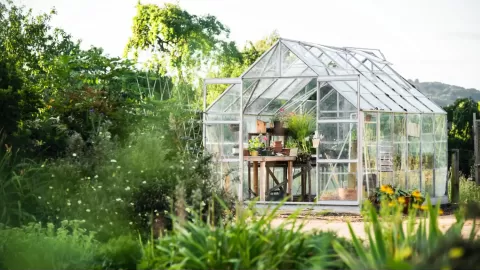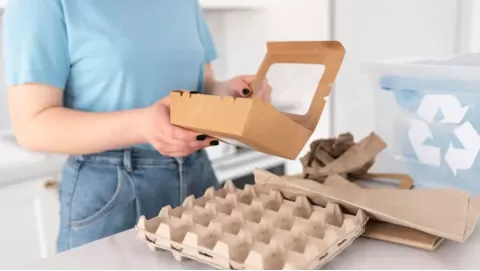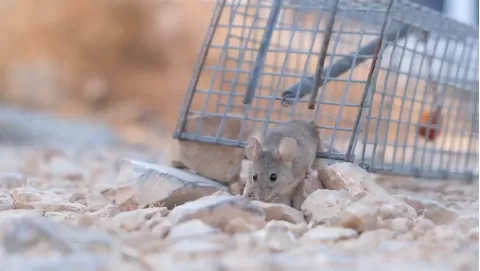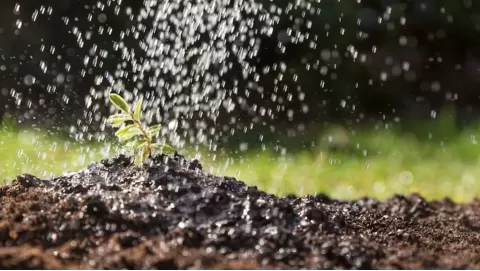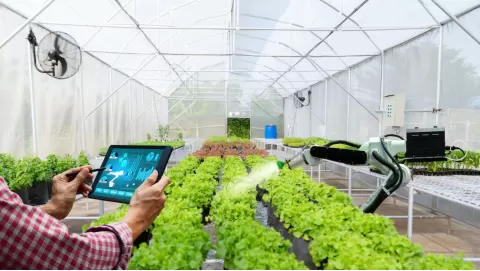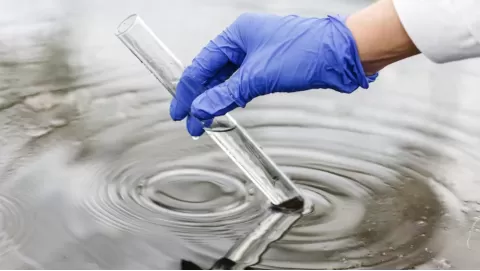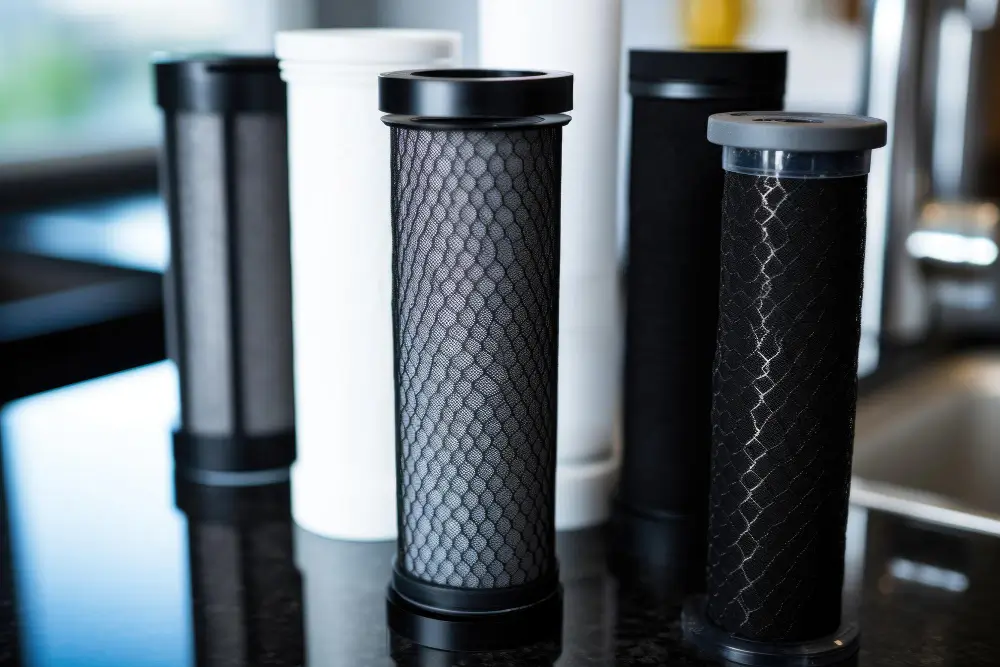
Choosing the right carbon filter: A comprehensive guide
Indoor gardening is on the rise, and it’s no wonder, with endless plant varieties ready for the picking, the foliage perks to surrounding yourself with plants are great! But indoor gardeners face one hurdle. The aim is to keep their air in their hop-growing environment. Enter the carbon filters. They are basic yet powerful. They also contribute significantly to the air quality of an indoor garden.
But the waters being treated are passed through filters as part of the purification process. These are also deodorizing agents and can balance pH in soil and water. The Carbon filters ot only make indoor gardening a calm and enjoyable experience, but they also help purify the air. They mop up airborne pollutants, odors and contaminants from the air, producing fresh-filtered air for plants. This can be especially important in tight spaces, where air flow could be more restricted.
Odor control is the single greatest hurdle indoor growers face. It can give off potent odors, especially during a flowering plant. Carbon filters also effectively scrubs the nasty smells, making the indoor garden less distinct and significantly more pleasant.
Cleaner air makes for more effective photosynthesis, resulting in healthier, burlier plants. They will learn how to tackle plant variation and the harmful bad stuff mold spores, fungal spores, they carry a lot of bacteria, volatile organic compounds (VOCs) and more that actually affect the plant and are harmful to cause illness how a carbon filter eliminates those threats to help a good breath of fresh air growing environment.
Growcycle is committed to offering the highest-quality carbon filters for hydroponic gardens. This is done because helping growers succeed means creating a sustainable and healthy growing environment. This means providing a sustainable and healthy growing environment because growers in their goal. They know that clean air must be found for hydroponic systems and the process of carbon filters in this matter.
Working on Carbon Filters
Those more complex carbon filters may look intimidating, but they are actually pretty easy to use. Key components and processes are summarized below:
- Activated Carbon
Activated carbon, also known as activated charcoal, is a key component of any carbon filter. This material has been designed to have a large surface area, which improves its trapping properties and can catch specific odors and contaminant molecules.
- Adsorption Process
Adsorbent activated carbon filter removes impurities from the air. Filter air flows through. Odor and pollutant molecules stick to the surface of carbon particles. And that act takes them out of circulation.
- Lifespan and Efficiency
Carbon filters do not last a lifetime. Their lifetime depends on usage and the environment, but runs from six months to a year. This activated carbon is eventually saturated, and its activity is reduced. They should be replaced regularly to continue optimal operation.
Related: Crop protection products for sale
Reasons to Use Carbon Filters
Why carbon filters are used by gardeners. At the end of the day, their goal is to enhance the quality of their gardens' water and soil. Here are a few more:
- Prevent Plant Diseases
Mold and bacteria spores from plants can infect the plants and lead to diseases that reduce yields or kill the crops. It doesn’t have any of those problems and uses a carbon filter to clean the air.
- Boost Growing Environment
Therefore, it must monitor air quality in order to maintain optimal growing conditions. It lands smack on the nose of the environmental target. They ensure that plants can flourish.
- Reduce Maintenance
They also catch any stray particles and dust, so you have less cleaning to do in the grow space. It helps you learn more about how to take care of a plant and saves you time and energy.
- Removes Impurities from Water
Carbon filters assist in removing chemicals and impurities from the water. They also estimate chlorinated compounds, pesticides, and heavy metals. Those contaminants can be toxic to plants and people. From an irrigation point of view, water should be pure.
Choosing the Right Carbon Filter Guide
Solving the carbon filter equation, add all of your needs to know when it comes to the carbon filter by making sure you have the right solution for you. So here’s a walk-through to help indoor gardeners make a more informed choice:
Step 1: Assess the Grow Room
The total indoor garden air volume is helpful to growers as they select the proper-sized filter. The first step in calculating a total volume is to measure the dimensions of your grow space. This will be the litmus test for what will need to be filtered.
Step 2: Identify Key Contaminants
Be aware of the contaminants growers want filtered out — odors, VOCs, mold spores, etc. Hence, they need to choose the correct type of filter, which is a filter with the correct specifications.
Step 3: Match CFM Ratings
Match the filter CFM rating to the ventilation system. This can cause poor filtration, leading to a decrease in air quality.
Step 4: Choose Quality Materials
Choose well-made, high-grade activated carbon filters. The aim is to offer improved durability and ensure proper filtration.
Step 5: Consider Additional Features
These include every little thing from filters, like pre-filters to hold the foremost filter fitter longer for the longer consumer engagement, to larger portability. Features to consider given your specific needs and preferences.
Related: Achieve a healthy lawn: The best fertilizers for St. Augustine grass
Kinds of Hydroponic Garden Carbon Filters
There are many different types of carbon filters, each one with its own advantages and disadvantages. Familiarity with these various types will enable you to make an educated decision when choosing one for your hydroponic garden.
- Granular Activated Carbon Filters (GAC)
GAC filters consist of loose activated carbon granules; they remove contaminants and odours. They work considerably well, with decent airflow, but do require a little extra maintenance due to their more open weave.
- Carbon Block Filters
These filter blocks activate carbon in solid form, allowing for a more densely packed adsorptive material. Carbon block filters are efficient and durable, but they typically slow air flow better than plain GAC filters.
- Hybrid Filters
Hybrid filters are a combination of both granular and block carbon elements. These provide a great combination of efficiency and air flow. They are versatile adjustment filters used in different hydroponic systems.
Common Mistakes to Avoid with Carbon Filters
So this is the kind of mistakes that does not allow the carbon filter to work effectively and efficiently.
Under-sizing the Filter
A filter smaller than the volume of air pulled by the garden will not be effective. You can constantly consult the air volume and choose a filter that has about that much CFM rating.
Neglecting the Required Care
Routine preventive maintenance not only contributes to low air quality, but can also cause new filters to be riddled with ineffective filtering. Check the use instructions by the manufacturer to maintain it.
Poor Installation
Air leakage due to poor installation causes poor performance of carbon filters. All elements need to be tight and secure.
Benefits of Using Carbon Filters
Here are some benefits of carbon filters:
- Improved Air Quality
The impure air is filtered using carbon filters. They create cleaner air for plants and gardeners. Clearer air means better yields and healthier crop.
- Efficiency in Energy
Install ventilator fans and a carbon filter for a positively ventilated system. The filter also prevents contaminants from getting in and would ease the work of the fans and other equipment, which could reduce energy costs.
- Longevity and Durability
They require defective filters to be replaced, and therefore are not cost-effective. They also tend to last longer with regular care.
Installation Tips for Carbon Filters
Proper installation of the carbon filter is essential for maximum effectiveness. Follow these tips to ensure that the filter performs at its best.
Choose the Right Location
Place the carbon filter in a central location within the growing space to ensure even air circulation. Ideally, position it near the top of the garden, as warm air rises and carries odors with it.
Securely Attach the Filter and Fan
Use sturdy brackets or straps to securely attach the carbon filter and inline fan. This will prevent vibrations and ensure stable operation.
Seal All Connections
To prevent air leaks, use duct tape or hose clamps to seal all connections between the carbon filter, fan, and ducting. This guarantees the filter receives all the air for the best possible purification.
FAQs
How frequently should my carbon filter be changed?
Replace carbon filters every 12 to 18 months, depending on the type of grow room and their usage. If vetted regularly, you can get a long life out of these systems.
Can I clean and reuse a carbon filter?
Some of the pre-filters might be washable, but you can’t regenerate the activated carbon in the main filter. It is better to replace it when the filter begins to lose efficiency.
Are carbon filters noisy?
The best carbon filters are designed to do this with as little noise as possible. But noise can also depend on which ventilation system you have connected.
The Bottom LineFor a healthy and productive indoor garden, it is necessary to choose the right and appropriate carbon filter. Growers should get to know what they need, think of these key factors before acquiring a filter: filter specs and brand reputation. The right filter will help ensure the air quality is clean and encourage plant growth.
Disclaimer: This material is for informational purposes only and should not be relied on for legal, medical, financial, or any other form of professional advice.






